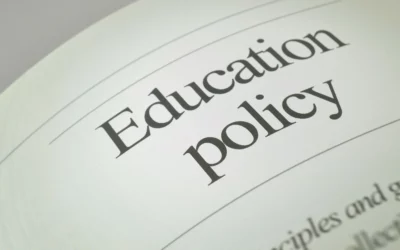
Written by Christine Cooke Fairbanks
February 8, 2024

Choice in education is about much more than policy ideas (like vouchers) that typically get the headlines; true choice includes all types of options, like career and technical education and many forms of online learning.
Recent years have brought a wave of awareness of career and technical education as not only an option for students and families, but a highly valued one. The path into specific careers and training is seen as a quicker, more cost-effective and financially secure path to postsecondary education for students and an answer to the skills gap.
Likewise, virtual school, once seen as a less rigorous option in education, has also become mainstream. It is seen as a solution for students who need flexibility of time and space.
Career and Technical Education in Utah and the nation
Career and technical education continues to flourish in Utah. In the 2022-23 school year, 185,256 students enrolled in CTE courses, which is up 7.7% from the 172,020 enrolled only two years ago, in the 2020-21 school year.
Impressive student outcomes and opportunities is probably part of why CTE is such an attractive option for so many. The Utah State Board of Education website says CTE pathways “show students a direct connection between doing well in high school and being able to transition smoothly to postsecondary opportunities or getting a good job when they graduate.” In a time when people are questioning the path to college due to its high costs, CTE may be an especially important opportunity to students.
Furthermore, when school is relevant, students are more invested. This may be why there was a 99% high school graduation rate for students who completed a CTE program (CTE completers) and a 97% high school graduation rate for students who completed specific requirements within a CTE program (CTE concentrators). When compared to Utah’s statewide high school graduation rate of 88%, the value of CTE pathways in education becomes clear.
Online learning and CTE
One broader challenge for CTE during the pandemic was a shift toward online learning. Many of the CTE areas require hands-on, work-based learning, requiring programs to adapt to blended learning models. At the same time, online learning in CTE, if approached correctly, might bring CTE opportunities to even more students. Space for virtual learning in CTE is an opportunity for innovation.
Virtual learning in Utah and the U.S.
Virtual learning in general is now a common delivery model in education, whether students are using it fully or in combination with other modes of learning.
Even before the pandemic, during the 2019-20 school year, across the nation there were 293,717 students in fully virtual schools and 4,751,775 students in partially virtual schools, meaning far more students’ education was partially rather than fully virtual. This makes sense, since people are unique and may learn better using multiple forms of instruction. Many predict that online learning will continue to be the learning model of the future.
Online learning in Utah
A recent report, released at the end of 2023, shows that the number of students enrolled in the Statewide Online Education Program quadrupled from pre-pandemic (6,000 students) to fall 2022 (24,036 students).
This appears to match the reported demand for online schools in the state in recent years. At the same time, the number of virtual schools has dipped a little. There are currently 34 virtual schools – down two since 2022-2023. But virtual learning can come from a variety of different providers and platforms. Even if the number of schools drops, students may be accessing online learning in greater numbers than ever before.
Furthermore, delivery models are changing. A fully virtual reality charter school – with headsets and student avatars – is set to open in 2025. The hope is to create a fully “immersive” experience that can assist learning. How this ultimately impacts student learning will be something to watch.
A 2023 research report found that while virtual learning has exploded in popularity, its outcomes in terms of student performance lag behind other education models. This is consistent with past findings in the higher education space. Though like anything else, it depends on the individual student. Other research finds that for some, K12 online learning yields the same or better results, but on average students tend not to perform as well, especially so for those who already struggle. The point is that online learning should simply be another option for families who can choose among its pros and cons for their student.
As families and entrepreneurs move into the online learning space for convenience and flexibility, it is prudent to consider how effective a given online option is in terms of student learning.
Conclusion
Career and Technical education continues to produce impressive outcomes for students, including postsecondary opportunities. How it can translate to online learning is something for policymakers to consider. Likewise, online learning should continue to seek quality student learning as its main goal.

Insights: analysis, research, and informed commentary from Sutherland experts. For elected officials and public policy professionals.

-
The number of Utah students enrolled in Career and Technical Education courses has increased from 172,020 in 2020-21 to 185,256 in 2022-23.
-
Career and Technical education students in Utah have higher high school graduation rates than the state average.
-
The number of students enrolled in the Utah Statewide Online Program quadrupled between pre-pandemic (6,000 students) and fall 2022 (24,036 students).
-
We should ensure that publicly funded online learning produces quality student outcomes.
Read More
Looking at Supreme Court and religious freedom through the lens of the presidential campaign
Two constitutional issues highlight similarities and differences between the Biden and Trump administrations.
Education policy to consider during the 2024 election season
Here’s a look at what each presidential candidate is likely to focus on in education, given their track records and campaign platforms.
Ignoring the text of the Constitution is a mistake
A written Constitution is entirely superfluous if the document is simply meant to give the people what they want.


